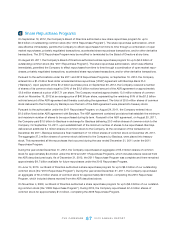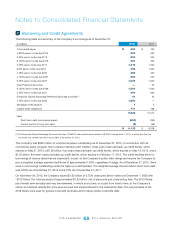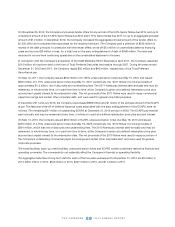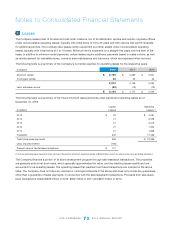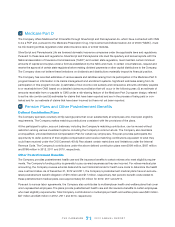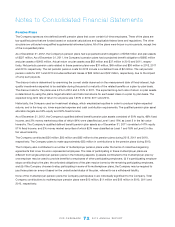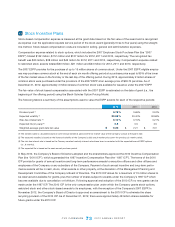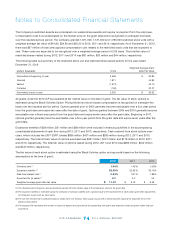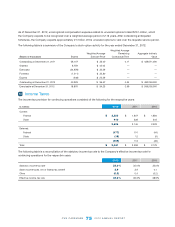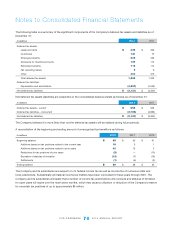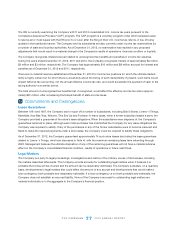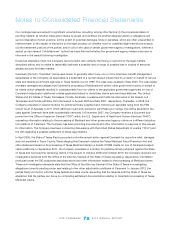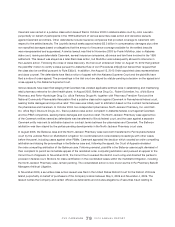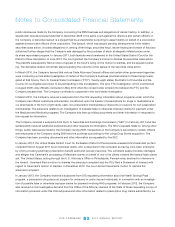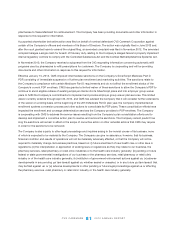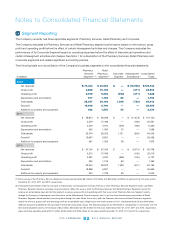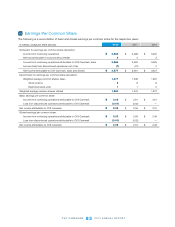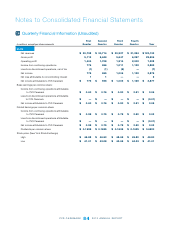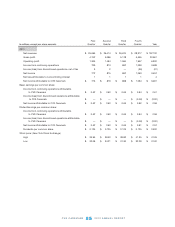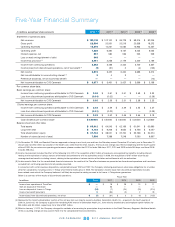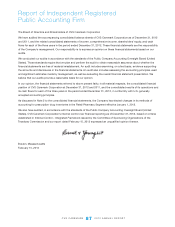CVS 2012 Annual Report Download - page 79
Download and view the complete annual report
Please find page 79 of the 2012 CVS annual report below. You can navigate through the pages in the report by either clicking on the pages listed below, or by using the keyword search tool below to find specific information within the annual report.
CVS CAREMARK 2012 ANNUAL REPORT
77
The IRS is currently examining the Company’s 2011 and 2012 consolidated U.S. income tax years pursuant to the
Compliance Assurance Process (“CAP”) program. The CAP program is a voluntary program under which taxpayers seek
to resolve all or most issues with the IRS prior to or soon after the filing of their U.S. income tax returns, in lieu of being
audited in the traditional manner. The Company and its subsidiaries are also currently under income tax examinations by
a number of state and local tax authorities. As of December 31, 2012, no examination has resulted in any proposed
adjustments that would result in a material change to the Company’s results of operations, financial condition or liquidity.
The Company recognizes interest accrued related to unrecognized tax benefits and penalties in income tax expense.
During the years ended December 31, 2012, 2011 and 2010, the Company recognized interest of approximately $4 million,
$2 million and $3 million, respectively. The Company had approximately $10 million and $8 million accrued for interest and
penalties as of December 31, 2012 and 2011, respectively.
There are no material reserves established at December 31, 2012 for income tax positions for which the ultimate deduct-
ibility is highly certain but for which there is uncertainty about the timing of such deductibility. If present, such items would
impact deferred tax accounting, not the annual effective income tax rate, and would accelerate the payment of cash to the
taxing authority to an earlier period.
The total amount of unrecognized tax benefits that, if recognized, would affect the effective income tax rate is approxi-
mately $61 million, after considering the federal benefit of state income taxes.
13 Commitments and Contingencies
Lease Guarantees
Between 1991 and 1997, the Company sold or spun off a number of subsidiaries, including Bob’s Stores, Linens ‘n Things,
Marshalls, Kay-Bee Toys, Wilsons, This End Up and Footstar. In many cases, when a former subsidiary leased a store, the
Company provided a guarantee of the store’s lease obligations. When the subsidiaries were disposed of, the Company’s
guarantees remained in place, although each initial purchaser has indemnified the Company for any lease obligations the
Company was required to satisfy. If any of the purchasers or any of the former subsidiaries were to become insolvent and
failed to make the required payments under a store lease, the Company could be required to satisfy these obligations.
As of December 31, 2012, the Company guaranteed approximately 74 such store leases (excluding the lease guarantees
related to Linens ‘n Things, which are discussed in Note 4), with the maximum remaining lease term extending through
2022. Management believes the ultimate disposition of any of the remaining guarantees will not have a material adverse
effect on the Company’s consolidated financial condition, results of operations or future cash flows.
Legal Matters
The Company is a party to legal proceedings, investigations and claims in the ordinary course of its business, including
the matters described afterwards. The Company records accruals for outstanding legal matters when it believes it is
probable that a loss will be incurred and the amount can be reasonably estimated. The Company evaluates, on a quarterly
basis, developments in legal matters that could affect the amount of any accrual and developments that would make a
loss contingency both probable and reasonably estimable. If a loss contingency is not both probable and estimable, the
Company does not establish an accrued liability. None of the Company’s accruals for outstanding legal matters are
material individually or in the aggregate to the Company’s financial position.
13


